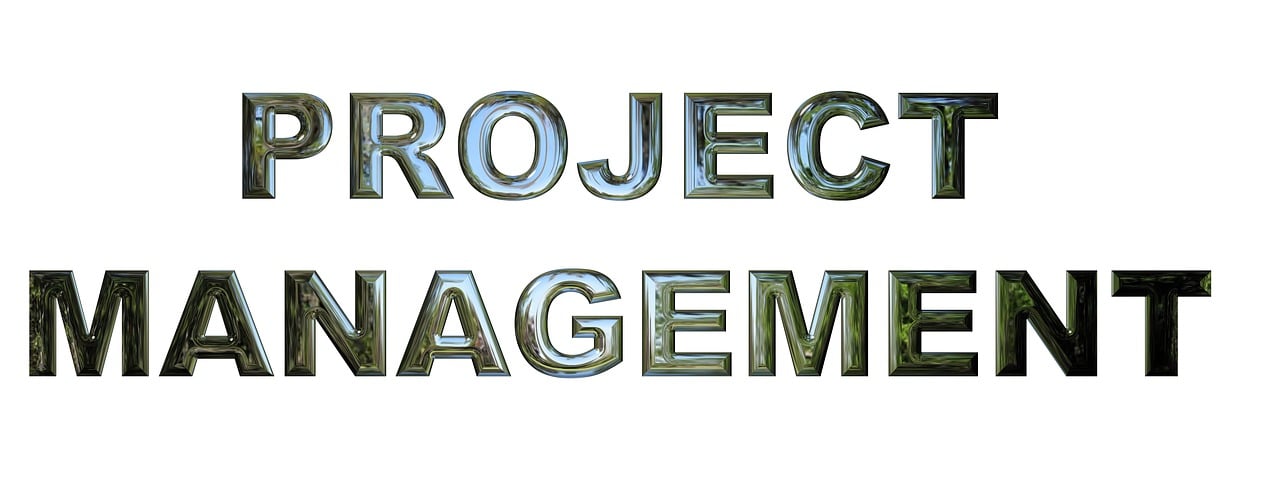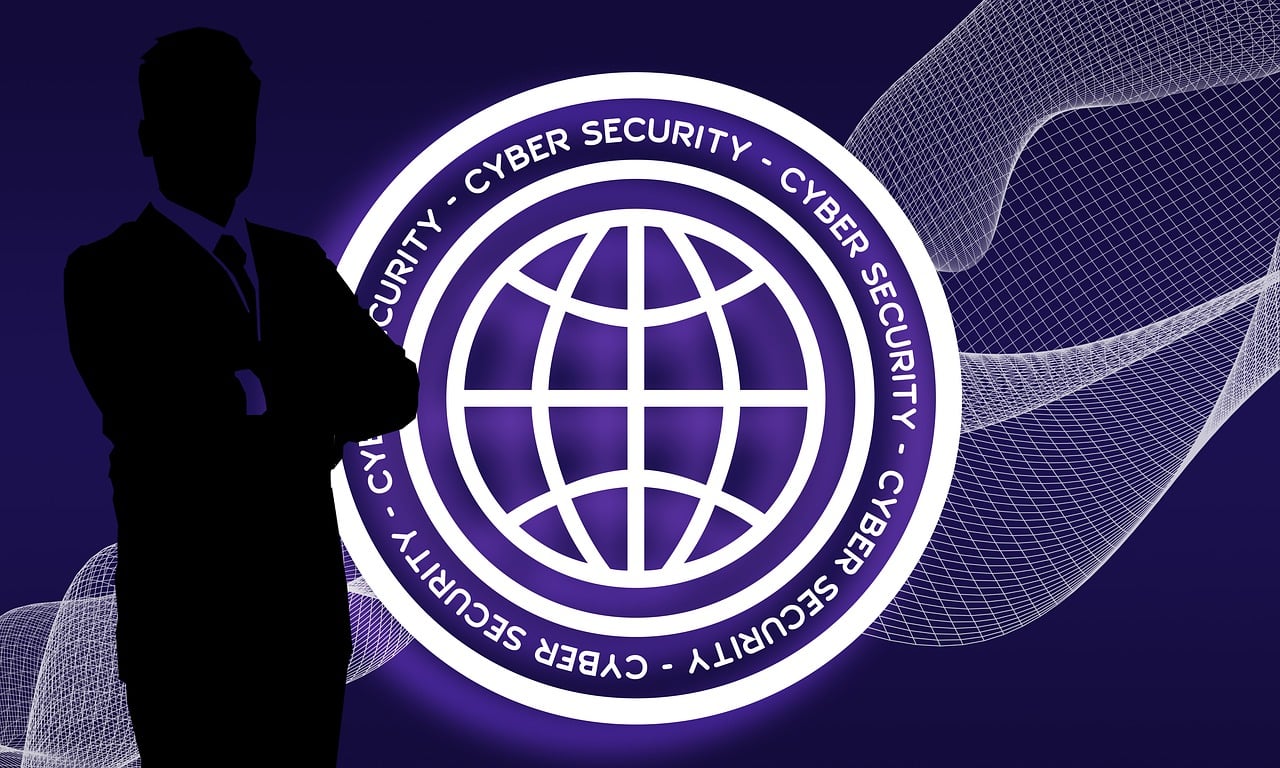
Top 10 Best Project Management Software & Tools
Managing a project without the right software tools is akin to navigating a cross-country journey without a GPS. As a project manager, you’re the driver, but without the proper instruments, you’re in for a turbulent ride. Project management tools are indispensable for organizing operations from inception to completion, helping you stay on course and avoid unforeseen obstacles. They also revolutionize team coordination and communication by dismantling geographical and temporal barriers, fostering efficient and transparent work management.
Below is our carefully curated list of the 10 best project management software of 2025, designed to help your team deliver projects on time, within budget, and scope.
Our Top 10 Best Project Management Software & Tools: Which is Best For Your Needs?
- monday.com – Best project management software overall
- ClickUp – Best for its vast variety of tools
- HubSpot – Best for small businesses and teams
- Notion – Best for knowledge management and organizing notes
- Salesforce – Best for managing clients
- Pipedrive – Best for integration with CRM
- Asana – Best for customizable dashboards
- Netsuite – Best for Resource Management
How We Reviewed the Best Project Management Software & Tools – Our Methodology
Our approach to reviewing project management software is hands-on. Whenever possible, we test trials and demos to directly experience a platform’s capabilities. This method is crucial for understanding software functionality, ease of adoption, and potential shortcomings.
If a trial isn’t feasible, we delve deep into the software, contacting the provider’s support team to clarify features and their operation. We also examine support documentation to assess user-friendliness and customization options. For all software, we analyze reviews from small and medium-sized businesses across various sectors to understand how different platforms cater to specific project types and teams. Finally, we meticulously scrutinize pricing to determine which platforms offer the best value.
Our assessment criteria include:
- Ease of use
- Scalability
- Customizability
- Collaboration features
- Task management
- Reporting and analytics
- Integration
- Security
- Pricing
- Customer support
Top 10 Project Management Software Products
1. monday.com: Efficient Resource Management Tool
monday.com unifies your team’s tasks and processes into a user-friendly and visually appealing interface. As a work operating system, it provides teams with a clear view of responsibilities and deadlines, enhancing transparency, accountability, and resource management. It offers over 200 customizable templates with more than 20 column options and various integrated apps, streamlining project setup and improving efficiency.
You can tailor dashboards to provide detailed, team-specific views of tasks, project progression, and upcoming deadlines, which enhances workflow clarity. Samyuktha Shivakumar, Global Marketing Operations Manager at Thoughtworks, notes that monday.com enables them “to budget the team’s time and efforts much more scientifically.” We chose monday.com for its blend of power, flexibility, and user-friendly design, making it ideal for even the most complex projects. Its seamless data import from spreadsheets and integration with existing tools eliminate manual entry, freeing up time for other priorities. Our experience highlights its ability to implement processes quickly and its robust communication tools, document sharing, and color-coding for transparency.
Pros:
- Color-rich interface for improved organization and coordination
- Robust list of supported, third-party integrations
- Drag-and-drop project charting and timeline construction
Cons:
- Pricing structure can be fragmented and unclear
- Certain features (Gantt charts, timelines) are paywalled by higher-tier plans
2. ClickUp: Visualize Tasks and Integrate Apps
ClickUp excels with its diverse visualization tools, including Gantt charts, mind maps, and Kanban boards, accommodating various project management styles. These features simplify task tracking, progress monitoring, and challenge identification.
The “Timeline View” offers a clear, linear way to plan schedules and create visual roadmaps. You can group tasks by assignee, priority, tags, and custom fields for flexible workflows. ClickUp boosts team visibility with the “Pulse ClickApp,” showing online users and their current tasks. Its global timer tracks time automatically or manually, syncing across devices. We chose ClickUp for its seamless integration with over 1,000 apps, including Slack, GitLab, GitHub, and Webhooks, making it ideal for development teams. Our experience found its unique features like notepads, time tracking, goal-setting tools, and AI compatibility impressive, along with efficient slash commands for quick task management.
Pros:
- AI Compatible
- Can integrate with over 1,000 apps
- Offers numerous project tracking tools
Cons:
- Extensive feature list can be overwhelming for new users
- Steep learning curve for beginners
3. HubSpot: Includes Pre-Made To-Do Lists
You can use HubSpot to enhance team coordination through structured lists, allowing you to create and assign tasks, add subtasks, and set due dates from the same tab. You can also tag team members, leave comments, and attach files within projects for improved communication and collaboration.
While HubSpot may not offer advanced tools like Gantt charts or detailed time-tracking, it provides a reliable foundation for managing tasks. Its real-time dashboard offers critical insights into project timelines, team workloads, and individual performance. This data can be used to identify potential hold-ups, delegate work more effectively, and tailor dashboard views to team needs. We chose HubSpot for its prebuilt project templates, which assist sales and marketing teams with tasks like launching campaigns and creating email newsletters, saving time and providing clear instructions. Our experience found HubSpot’s features easy to use, even for less tech-savvy team members, with seamless integration with HubSpot’s CRM creating a unified work environment and calendar syncing for efficient task management.
Pros:
- Customizable real-time dashboard
- Offers prebuilt project templates
- Integration with other HubSpot products
Cons:
- Smaller enterprises might find HubSpot’s premium pricing costly
- Lacks more advanced project scheduling software
4. Notion: All-in-One Project and Knowledge Management
Notion is an incredibly customizable project management platform, offering a “blank slate” for tracking tasks, note-taking, and creating shareable pages with a sleek design. It’s easy to create designs, manage task lists, and build a knowledge base for your staff.
Notion’s desktop and mobile apps are intuitive, and its extensive template library supports a wide range of project management tasks. You can access a large database of workspaces created by other users, which is helpful for pre-made project templates. We chose Notion for its versatility and customizable nature, suitable for various users. Its AI tool is particularly unique, allowing you to streamline workflows by searching across apps, generating and editing content, analyzing data, and engaging in context-aware chats directly within your workspace. Our experience found it quick to organize complex projects into a central system, with easy access to notes and cross-referencing between workspaces, significantly boosted by Notion AI.
Pros:
- Easy document sharing and collaboration
- Versatile template-based page system
- Excellent built-in AI tool
Cons:
- No phone support
- Not end-to-end encrypted
5. Salesforce: Streamline Operations with AI Insights
Salesforce provides a robust platform for project management, deeply integrating with its CRM services to offer a seamless workflow across sales, marketing, and customer service. Its interface caters to businesses of all sizes, offering customizable dashboards and a wide array of automation tools to significantly enhance productivity and operational efficiency.
With Salesforce, project managers get a comprehensive set of tools for resource planning, project tracking, and detailed reporting. The platform’s strength lies in connecting various aspects of business management, simplifying oversight and driving project success through enhanced communication and data-driven decision-making. We chose Salesforce for its comprehensive feature suite, which not only supports project management but also integrates seamlessly with customer relationship management. Its ability to leverage AI for predictive analytics and automate routine tasks makes it a powerful tool for data-driven organizations. Our experience showed that its rich customization options allowed for precise workflow tailoring, improving project oversight and client interactions, with collaboration tools like Chatter proving especially beneficial.
Pros:
- Highly customizable to specific business needs
- Strong integration capabilities with other software
- Advanced analytics and reporting features
Cons:
- Can be overwhelming for new users
- Higher cost compared to some competitors
6. Pipedrive: Optimize Sales Cycles Efficiently
Pipedrive focuses on streamlining project management with an emphasis on enhancing sales processes. Designed for ease of use, it offers a visually intuitive pipeline management tool that helps teams track and organize their projects at every stage. It’s particularly suitable for small to medium-sized businesses seeking a straightforward, effective solution for managing sales pipelines and associated projects.
The platform excels in user-friendly design, enabling teams to set up and navigate without extensive training. Automated workflows reduce manual effort in tracking deals and projects, ensuring teams focus on critical tasks. With real-time updates and customizable pipelines, Pipedrive supports proactive project management and continuous alignment with evolving business goals. We chose Pipedrive for its user-centric design that simplifies project management, especially in sales environments. Its straightforward approach and affordability make it ideal for SMBs needing efficient, scalable solutions without the complexity of larger systems. Our experience found the visual pipeline interface easy to use, helping us stay on top of tasks and deadlines, leading to better project pacing and outcomes. The mobile app was a game-changer for sales reps on the go.
Pros:
- Intuitive and easy-to-use interface
- Affordable pricing structure
- Effective pipeline and activity management tools
Cons:
- Limited customization options
- Fewer features for complex project management needs
7. Asana: Centralized Workspace for Streamlined Team Coordination
Asana is designed to optimize workflow operations, allowing you to assign tasks, track deadlines, and visualize projects to keep your team focused. You won’t need to constantly check multiple email threads and chat apps, as its robust commenting and communication tools simplify team interactions.
This platform integrates effortlessly with popular applications like Google Drive, Slack, and Zoom, creating a centralized workspace for all project needs. This reduces the hassle of juggling multiple apps and effectively streamlines workflows, giving your team more time to focus on core tasks, leading to better collaboration and faster decision-making. We chose Asana for its flexible interface, which accommodates various project needs and visualization styles. For example, its timeline views and Kanban boards help marketing teams manage campaigns, while integrations with GitHub and Jira assist software developers in tracking code and bugs. Our experience found it easy to toggle between board and calendar views, providing a clear overview of projects and helping teams stay on track. While some features were challenging, the community forum effectively filled any knowledge gaps.
Pros:
- Adaptable to various work styles
- Centralized communication system
- Supports integrations with Google Drive, Slack, and Zoom
Cons:
- Some may find Asana’s notifications overwhelming
- Interface may feel cluttered at times
8. Netsuite: Cohesive Project Management System with Real-time Data
NetSuite’s end-to-end functionality delivers a solution that connects every aspect of a project—from resources and timelines to budgets and results—into one cohesive system. This holistic approach reduces the likelihood of miscommunication, inconsistencies, or oversights, and can lead to cost savings by requiring fewer external tools.
The platform is scalable and offers extensive customization options, including building new functions and personalizing dashboards. This flexibility allows you to adapt the system to your unique workflows rather than vice versa. Its automation capabilities and intuitive interface also simplify complex project management. While its complexity may result in a steep learning curve for new users, its versatility and advanced features make it a worthwhile investment. We chose NetSuite for its real-time data visualization and analytics capabilities, which help retrieve, analyze, and present crucial operational and financial data. These reports provide valuable insights for informed decision-making, enhance project transparency, and improve resource utilization and profitability. Our experience found NetSuite’s integration capabilities impressive, working seamlessly with various third-party applications and its cloud-based nature allowing remote access for efficient work-from-home scenarios.
Pros:
- Comprehensive for all aspects of project management
- Scalable and customizable
- Real-time data visualization and analytics capabilities
Cons:
- Pricing might be too expensive for smaller teams
- Steep learning curve for new users
9. Zendesk: All-In-One Customer Engagement Solution
Zendesk offers two distinct CRM platforms: Zendesk Suite for customer support and Zendesk Sell for sales. Zendesk Suite enables customer connection via phone and live chat and provides automated chatbots for streamlined conversations. Zendesk Sell helps track deals and leads, offering a comprehensive view of customer interactions and integrated email marketing.
Pros:
- Offers chatbots for customer support
- Wide range of integrations
- Built-in email marketing tools
Cons:
- Sales and customer support are separate platforms
- Might be too pricey for smaller teams
10. Atera: Combines Project Management with IT Service Management
Atera is an all-in-one IT management platform designed for Managed Service Providers (MSPs) and IT professionals. It provides remote monitoring and management (RMM), professional services automation (PSA), and AI-powered automation to streamline IT tasks.
Pros:
- All-in-one IT management platform
- AI-powered automation features
- Predictable, per-technician pricing
Cons:
- Lacks native integrations with some popular PM tools
- Might be too IT-focused for general project management needs
What Is Project Management Software?
Project management software helps organizations manage projects by enabling teams to plan, assign resources, track progress, and collaborate on tasks to achieve specific goals. This type of software typically includes features such as:
- Project planning tools
- Task tracking functions
- Gantt charts for visualizing progress
- Resource allocation tools
- Scheduling capabilities
- Risk management software
These platforms facilitate collaboration by providing a single workspace for all project-related activities. They also help teams stay on course by offering tools that identify potential risks or problems, ensuring everyone contributes to successful project completion.
Why Use Project Management Software?
Project management software is an invaluable tool for any organization seeking to stay organized and achieve its objectives. These platforms offer numerous benefits for teams, including:
- Efficient planning and tracking: Enables teams to plan and track project progress, ensuring tasks are completed on time and within budget.
- Effective communication: Provides a centralized workspace for teams to monitor task progress, discuss ideas, and share updates, enhancing team organization and synchronicity.
- Streamlined workflows: Allows teams to create repeatable processes that can serve as templates for future projects, thereby streamlining workflows and ensuring consistency.
- Resource allocation and workload management: Incorporates tools that simplify resource allocation and workload management, enabling teams to view available resources and assign tasks based on individual skill sets or availability.
- Real-time reporting and progress tracking: Allows teams to generate reports quickly and track progress in real time, helping identify potential issues before they escalate and ensuring everyone works toward the same goal.
- Centralized data: Ensures all project-related data is centrally stored, making it easy to access and share, aiding in tracking expenses, managing budgets, and controlling costs.
- Remote collaboration: Provides a shared workspace for remote teams to view task lists, communicate changes, or ask questions in real time, significantly enhancing productivity and cohesion among dispersed team members.
What Can You Do With Project Management Software?

Project management software empowers you to plan, organize, and track projects efficiently. You can assign tasks, set deadlines, monitor progress, and collaborate with team members in real-time. These tools offer features like visual dashboards, time tracking, file sharing, and automation, leading to better resource management, improved communication, and streamlined workflows for successful project completion.
Without proper project management tools, teams often encounter challenges such as miscommunication, missed deadlines, difficulty tracking progress, and budget overruns. The absence of a centralized system for managing tasks and resources can result in delays, confusion, and wasted time.
What Different Types of Project Management Software Are There?
Project management software can be categorized into four main types: individual, collaborative, integrated, and specialized tools.
- 1. Individual Project Management Software: Designed for personal use, this type focuses on productivity with features like task tracking, event management, reminders, and note-taking. It’s ideal for individuals managing personal projects or small-scale tasks.
- 2. Collaborative Project Management Software: The most commonly used type, collaborative software, facilitates team communication and collaboration. It includes features such as task assignment, resource management, progress tracking, report generation, and tools for remote team coordination, ensuring everyone stays organized and aligned.
- 3. Integrated Project Management Software: Combining the functionality of individual and collaborative tools, integrated software is best suited for larger organizations. It offers advanced features like resource planning, reporting, budgeting, file sharing, and real-time communication, enabling seamless collaboration and efficient project execution.
- 4. Specialized Project Management Tools: These include:
- Enterprise Software: Designed for large-scale projects and extensive teams, offering robust features for scalability.
- Agile Project Management Software: Ideal for teams following iterative workflows, it breaks tasks into smaller components, allowing quick adaptation to changing customer requirements.
How Much Does Project Management Software Cost?
The cost of project management software varies widely, ranging from free basic platforms to enterprise-level solutions costing thousands of dollars per month, depending on your needs, user count, and software complexity.
- Free and Basic Platforms: For small businesses on a tight budget, free project management software can be an excellent solution. These platforms often include basic features sufficient for small-scale projects and help keep costs low.
- Enterprise-Level Software: Enterprise-level solutions are more expensive, ranging from hundreds to thousands of dollars per month. The cost depends on factors like the number of licenses and the software’s complexity. These platforms typically offer advanced features and sophisticated interfaces, making them a worthwhile investment for organizations that can afford them.
- SaaS (Software as a Service) Solutions: SaaS platforms are often more cost-efficient than on-premise software. They eliminate the need for large upfront hardware investments and can be deployed quickly. SaaS solutions are scalable, reduce maintenance costs, and typically cost around $10–$20 per user per month.
- Project Portfolio Management Software: The cost of project portfolio management tools varies based on the number of users and desired features. It’s important to choose a plan that balances your budget with the functionality your team needs.
Is My Data Safe with Project Management Software?
Most project management software ensures data safety by adhering to robust security standards, including two-factor authentication, role-based access controls, and ISO certifications for protecting Personally Identifiable Information (PII).
However, data protection regulations vary by region. For example:
- European Union: Companies must comply with the General Data Protection Regulation (GDPR), which mandates strong user data protection and grants consumers control over their personal information.
- United States: There are no federal laws governing personal data usage, but individual states have implemented their own data protection regulations.
Before selecting a project management tool, ensure it aligns with the data privacy laws applicable to your location.
How to Choose Project Management Software for Your Team
Choosing the right project management software is crucial for successful project execution and goal achievement. Here are the key steps involved:
- Evaluate your requirements: Determine what features your team needs to narrow down your options (e.g., Do you need access to a mobile app?).
- Explore available options: Once you know what you need, research various software options. Compare them based on cost, functionality, and user reviews.
- Do a trial run: Try out the software before purchasing it. Ensure it integrates well with your team’s workflow and meets all your requirements.
- Deploy the software: Once you’ve selected the software, ensure it’s set up correctly. Train your team to use it effectively to maximize its benefits.
- Maintain the software: Regularly evaluate your software’s performance. Implement updates or adjustments as needed to keep it running smoothly.
Bottom Line: Why Project Management Software is a Game-Changer
This comparison of project management software highlights the diverse options available, each tailored to different organizational needs and project complexities. When choosing the right software, prioritize factors like ease of use, customization, reporting capabilities, and integration with your existing systems.
The best tool isn’t the one with the most features but the one that fits seamlessly with your team’s workflow and project requirements. Selecting the right solution demands a clear understanding of your team’s needs and your business’s objectives.
What kind of projects does your team typically work on? Understanding this might help narrow down the options further!




